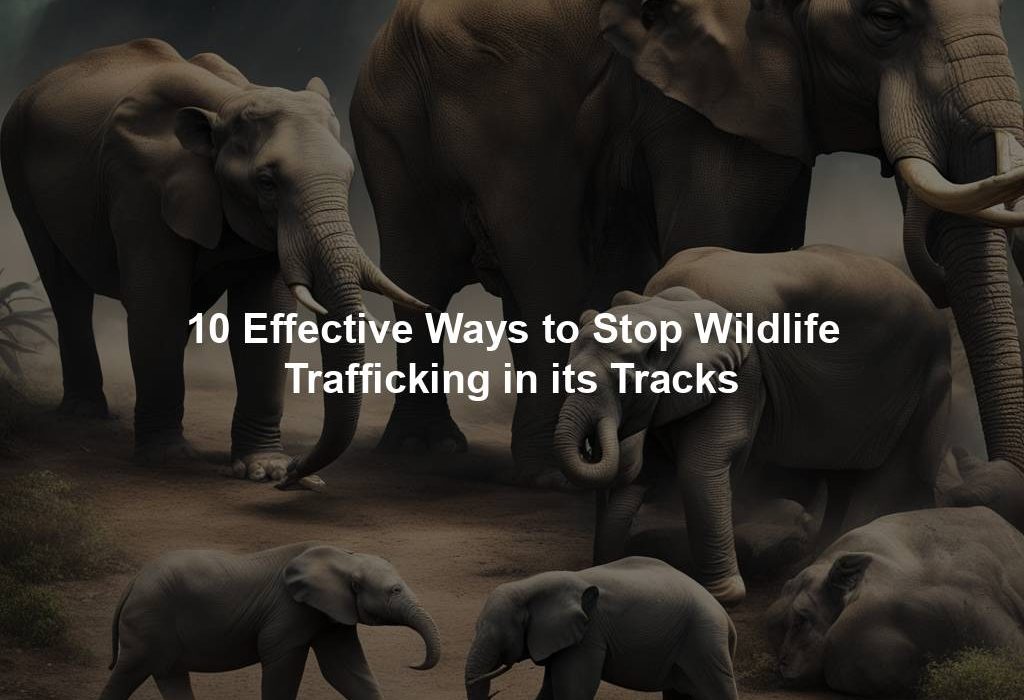Wildlife trafficking is not merely a crime against animals; it’s a profound threat to our planet’s delicate balance and the communities that depend on biodiversity. The illegal trade of wildlife not only jeopardizes endangered species but also fosters a network of criminal activities that corrode societies. To combat this global menace effectively, a comprehensive approach that addresses both the roots and branches of the issue is imperative. Here are 10 impactful strategies to halt wildlife trafficking in its sinister tracks.
1. **Bolster Law Enforcement and Deterrence**
Strengthening law enforcement endeavors and imposing stringent penalties on perpetrators are pivotal in curbing wildlife trafficking. By amplifying resources, training, and consequences, we can heighten the risks and consequences associated with engaging in such illicit practices.
2. **Enhance Global Collaboration**
Given the transnational nature of wildlife trafficking, fostering enhanced international cooperation is indispensable. Sharing intelligence, pooling resources, and establishing cross-border agreements are essential steps in combating this illicit trade network at a global scale.
3. **Empower Through Awareness and Education**
Educating the masses about the detrimental repercussions of wildlife trafficking is instrumental in mobilizing support for conservation initiatives and diminishing the demand for illegal wildlife products. Spreading awareness about the ramifications on ecosystems, biodiversity, and local communities can steer consumer behavior towards ethical choices.
4. **Uplift Local Communities and Sustainable Livelihoods**
Supporting communities dependent on natural resources with alternative livelihood opportunities can alleviate the strain on wildlife habitats. Initiatives promoting sustainable practices, community-led conservation endeavors, and eco-tourism ventures can mitigate incentives for engaging in illegal wildlife trade.
5. **Deploy Effective Monitoring and Enforcement**
Robust monitoring mechanisms, including technological tools like GPS trackers and drones, are essential to intercept and deter wildlife trafficking activities. Collaboration between law enforcement, conservation groups, and communities can bolster targeted enforcement strategies.
6. **Fortify Border Controls and Regulations**
Strengthening border controls and customs regulations is paramount in intercepting illegal wildlife products during transit. By intensifying inspections and enforcement measures, we can impede the flow of contraband across borders.
7. **Engage the Private Sector**
Enlisting the support of businesses in industries like tourism and transportation can significantly impact wildlife trafficking. Encouraging ethical business practices, sustainable supply chains, and partnerships for wildlife conservation can mitigate demand for illegal wildlife products.
8. **Uphold International Agreements**
Supporting international conventions such as CITES is integral to regulating the trade of endangered species and safeguarding wildlife. Upholding these agreements necessitates compliance, enforcement, and collaboration among nations to combat wildlife trafficking.
9. **Combat Corruption and Organized Crime**
Tackling corruption and organized crime that facilitate wildlife trafficking is imperative. Strengthening anti-corruption measures, promoting transparency, and prosecuting individuals involved in illegal activities are critical to disrupting these criminal networks.
10. **Invest in Conservation and Sustainable Development**
Investing in conservation initiatives and sustainable development practices is pivotal for ensuring the long-term preservation of wildlife and ecosystems. By fostering cooperation among governments, organizations, businesses, and communities, we can create a harmonious future where wildlife thrives alongside human populations.
In conclusion, addressing wildlife trafficking demands a concerted effort from all sectors. By embracing the strategies outlined above, we can arrest wildlife trafficking and safeguard endangered species from exploitation. Let us unite to secure a thriving future where wildlife flourishes in their natural habitats.




